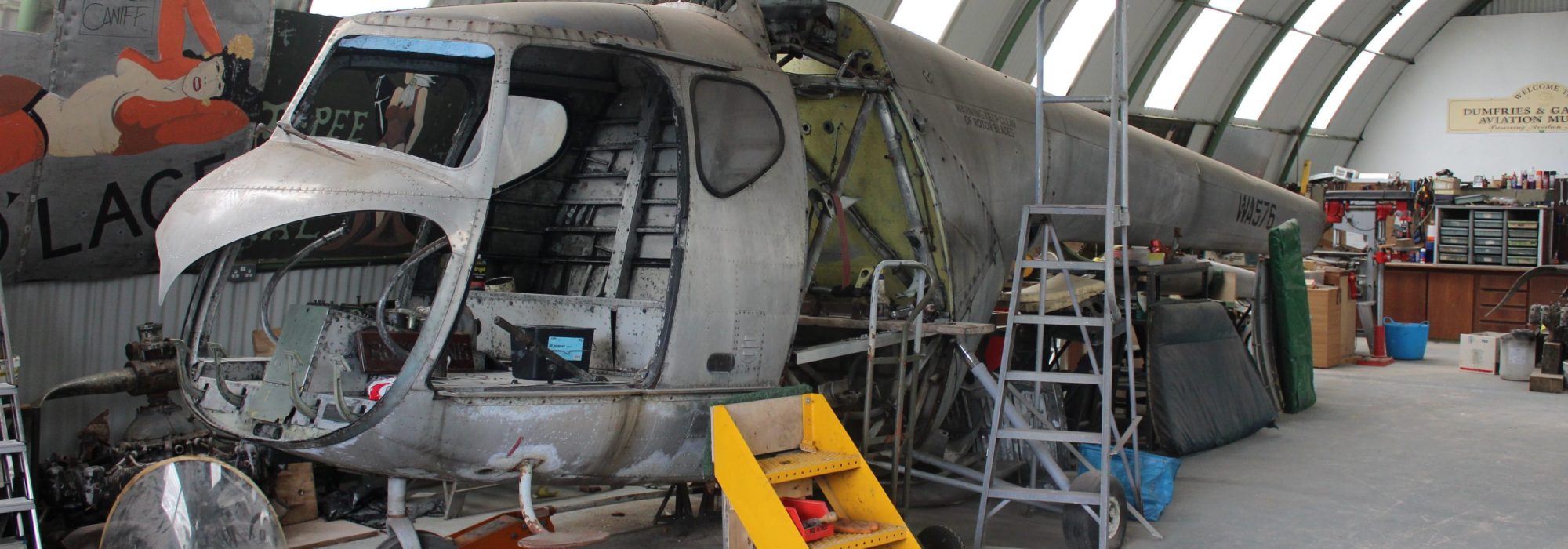Bristol Sycamore
The Sycamore was the first all-British designed helicopter to fly, making its first flight in July 1947. It was designed as a 4-seat general purpose helicopter and approximately 180 were built in four main versions until 1959. After overcoming many minor problems, it went on to serve successfully in the RAF. It was used for pilot training, search and rescue, and army communications work. They were officially retired in 1971, but the last two soldiered on until August 1972. They were also sold to Australia, Belgium and Germany.
RAF Sycamores were used in the Malayan, Cyprus and Aden emergencies for rescue work, deploying small army patrols and carrying out spotting work.
One visible feature of all modern helicopters was developed on the Sycamore and that is that on the first few built, the pilot was seated on the left-hand side, but from then on moved to the right-hand seat, which became the standard for all helicopters.
Our aircraft, serial Number WA576, is a Mark 3 capable of seating five personnel. It first flew in 1950 and was delivered to the Joint Experimental Helicopter Unit for trials work. During its trials, various changes were made including to the undercarriage and side doors. These changes were incorporated in future production machines.
After use as a trials aircraft, it was transferred to RAF Halton for use as an instructional airframe. It arrived at the museum in 1987.
The Sycamore is undergoing restoration in the workshop and the engine is displayed separately in the Control Tower.




